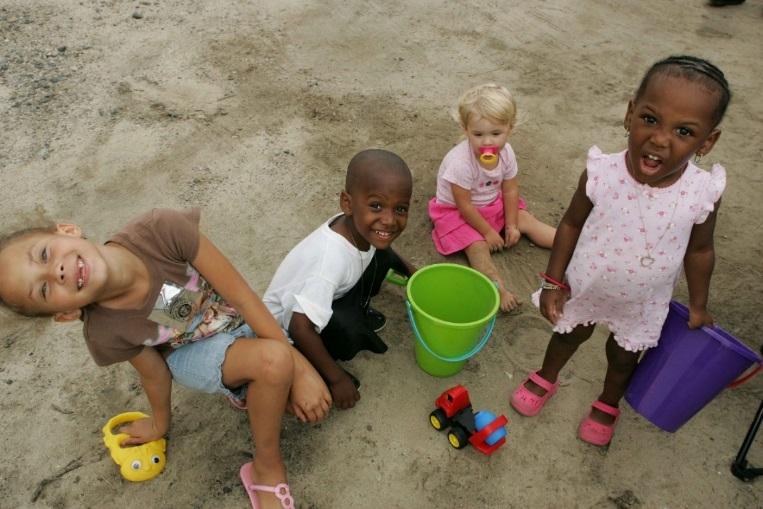8.4 Social Emotional Theories and Milestones
Preschoolers are developing many social and emotional skills from 3 to 6 years old. The interactions they have with others influence the way in which skills are learned. Next, we will look at two different theories that have been used to explain social and emotional development in children.
Erikson’s Theory of Psychosocial Development
Researcher Erik Erikson believed that children learn through their social interactions. In preschool, children will experience unique “conflicts” that will help them develop. The first two stages of Erikson’s theory were covered in the previous unit. We will now focus on stage 3 of his theory.
Stage 3: Initiative versus Guilt (3 to 5 years old)
The third stage of Erikson’s Theory of Psychosocial Development is initiative versus guilt (Erikson, 1982). In this stage, children are eager to try new things, learn new skills, and engage with peers. This desire to take initiative occurs when children successfully achieve trust and autonomy in stages 1 and 2. Children learn that they have power over what happens to them and can influence the world they live in.
Preschoolers who live in supportive environments with nurturing caregivers have no trouble initiating activities or exploring their worlds independently. They may want to pretend that they are in school with their friends, or they may work together to build a sand castle (figure 8.5). Children may also want to take over self-care tasks, such as dressing themselves without the help of an adult. Caregivers can support a preschool child’s sense of initiative by giving them space to try new things and by avoiding being critical of any mistakes (or messes) that arise from this independence. Encouragement is key for optimal development.
Unfortunately, some children do not live in supportive environments. They may experience criticism by their caregivers or be overly controlled by the adults around them. These barriers can result in children being hesitant to try new things or feeling guilt or shame if they try a task and fail. This inhibits their natural sense of purpose and curiosity. Guilt is a common feeling experienced by children, but it should not overwhelm their need for initiative. Success in this stage will lead to the virtue of “purpose” which contributes to a healthy relationship between the self and the external world (Orenstein & Lewis, 2022).

Social Learning Theory
Have you ever heard the phrase “monkey see, monkey do”? If so, you are familiar with Albert Bandura’s social learning theory. As mentioned in Chapter 6, infants and toddlers spend much of their time learning about their environment and observing others, mainly their caregivers. Preschool children continue to use observational learning, but they are now exposed to several models of behavior, such as caregivers, friends, and relatives, teachers or child care providers, and characters on television or other media (Health Research Funding, n.d.).
Social learning theory helps us understand some of the typical behaviors that we see during the preschool years, such as when children mimic the behaviors of those aligned with their own gender. We may also notice some atypical behaviors as children “try” new things as a result of imitation or modeling (Health Research Funding, n.d.).
Social and Emotional Milestones
A child’s expanded understanding of themselves and others develops with age. Many factors contribute to the way in which children develop social and emotional skills. Below is a list of the most common social and emotional milestones typically displayed during the preschool years. It is important to remember that each child is unique and may develop these skills at different rates than outlined below in figure 8.6.
| Typical Age | What Most Children Do by This Age |
|---|---|
| 3–4 years |
|
| 4–5 years |
|
| 5–6 years |
|
Licenses and Attributions for Social and Emotional Theories and Milestones
“Social and Emotional Theories and Milestones” by Christina Belli is licensed under CC BY 4.0.
Figure 8.5. Image by Steve Hillebrand is in the Public Domain.
Figure 8.6. Developmental Milestones by the CDC is in the Public Domain.
a process by which children gain understanding of themselves, their emotions, and the connections between themselves and others.

